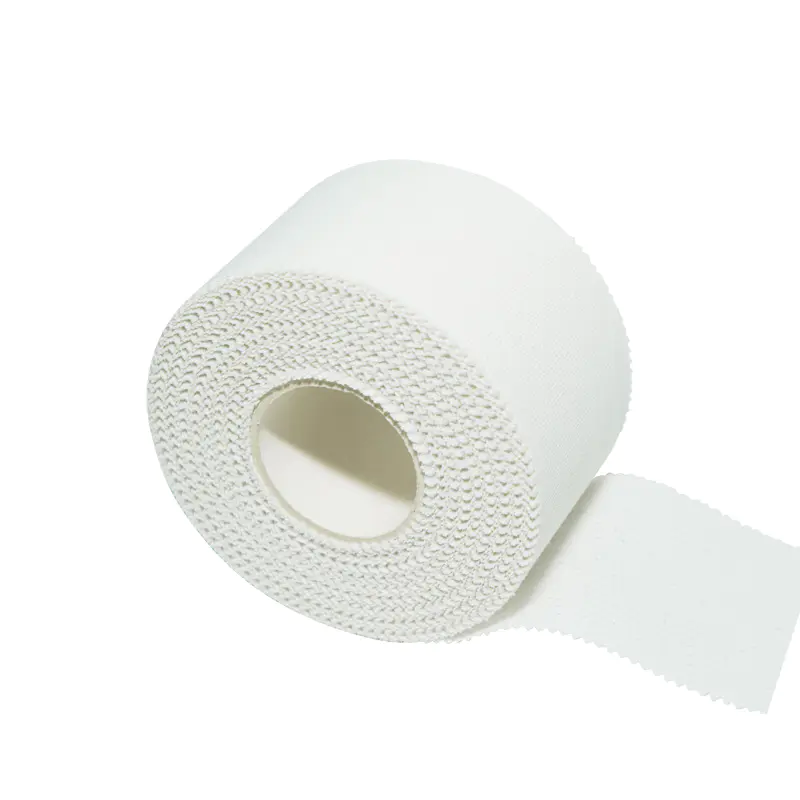Athletic tape is a powerful tool in injury prevention and recovery, but its effectiveness hinges on one critical factor: proper application. Knowing how to apply and, equally important, how to remove the tape correctly can make the difference between a secure, supportive wrap and a painful, ineffective mess. This guide will walk you through the essential steps to master the art of the tape.
Before you even think about unwrapping your athletic tape, you need to prepare the surface. This is arguably the most crucial step. A clean, dry, and hair-free surface ensures the adhesive sticks properly and provides optimal support.
Cleanse: Wash the area with soap and water to remove any dirt, oil, or lotions. These substances can weaken the adhesive and cause the tape to peel off prematurely.
Dry Completely: Pat the skin completely dry. Moisture is the enemy of a strong tape bond.
Trim or Shave Hair: If the area has a significant amount of hair, it's best to trim or shave it. This not only ensures a stronger bond but also makes the removal process far less painful.
While taping techniques vary widely depending on the body part and type of injury, a few universal principles apply to all applications of athletic tape.
Anchors First: Always start by creating a stable base, or "anchor," with a strip of tape applied directly to the skin. This anchor provides a foundation for the rest of the tape strips.
Avoid Gaps and Wrinkles: Each new strip should overlap the previous one by about half its width. This ensures a smooth, continuous layer of support. Wrinkles in the tape can create pressure points that lead to skin irritation or blisters.
Tension is Key: The amount of tension you apply matters. For rigid athletic tape, the goal is to provide firm, restrictive support, so the tension should be taut but not so tight that it cuts off circulation. For kinesiology tape, the stretch is calculated based on the goal (e.g., 25% for lymphatic drainage, 50% for muscle support).
Leave Joints Flexible (or Not): Depending on your goal, you may need to either fully restrict or allow some movement. For example, when taping an ankle with rigid tape, the goal is to prevent inversion, so the tape should be applied to limit that motion. When using kinesiology tape for a knee, the strips should be applied around the kneecap to allow for full flexion and extension.

After you've finished applying the athletic tape, it’s essential to perform a quick check to ensure you haven’t applied it too tightly. A tape job that’s too tight can cut off blood flow and cause serious issues.
The "Pinch Test": Gently pinch the skin or nail bed below the taped area. The color should return to normal within a few seconds. If it stays pale or blue, the tape is too tight and needs to be re-applied.
Feel for Numbness or Tingling: Ask yourself or the person you’ve taped if they feel any numbness, tingling, or a pulsing sensation. These are all signs of restricted blood flow.
The removal of athletic tape is often the most dreaded part, but it doesn't have to be. A little preparation can make the process quick and painless.
Use an Adhesive Remover: Sprays or wipes specifically designed to break down tape adhesive are your best friend. Apply the product liberally to the tape, letting it soak in for a minute or two. This will dissolve the sticky bond, allowing the tape to lift off easily.
Pull Slowly and at an Angle: Don't rip the tape off in one quick motion. Instead, pull the tape back on itself, pulling parallel to the skin, not away from it. Use your other hand to press down on the skin behind the tape as you pull, which will help keep the skin from stretching.
Gently Work Through Tightly Taped Areas: For areas with multiple layers or high tension, take your time. If you feel any pain, apply more adhesive remover.
By following these simple steps, you can ensure your use of athletic tape is not only effective but also safe and comfortable. The right technique will protect your skin and maximize the tape's ability to support your body.







